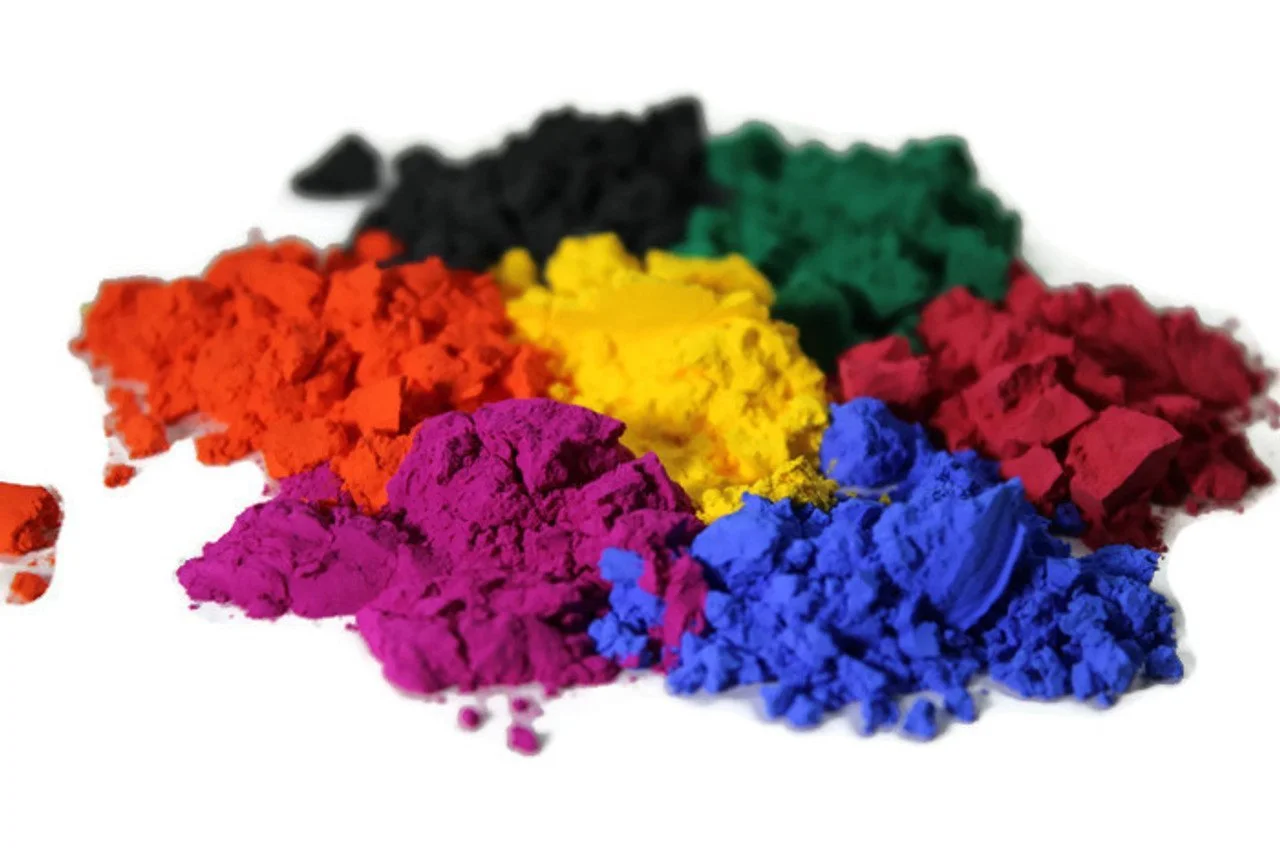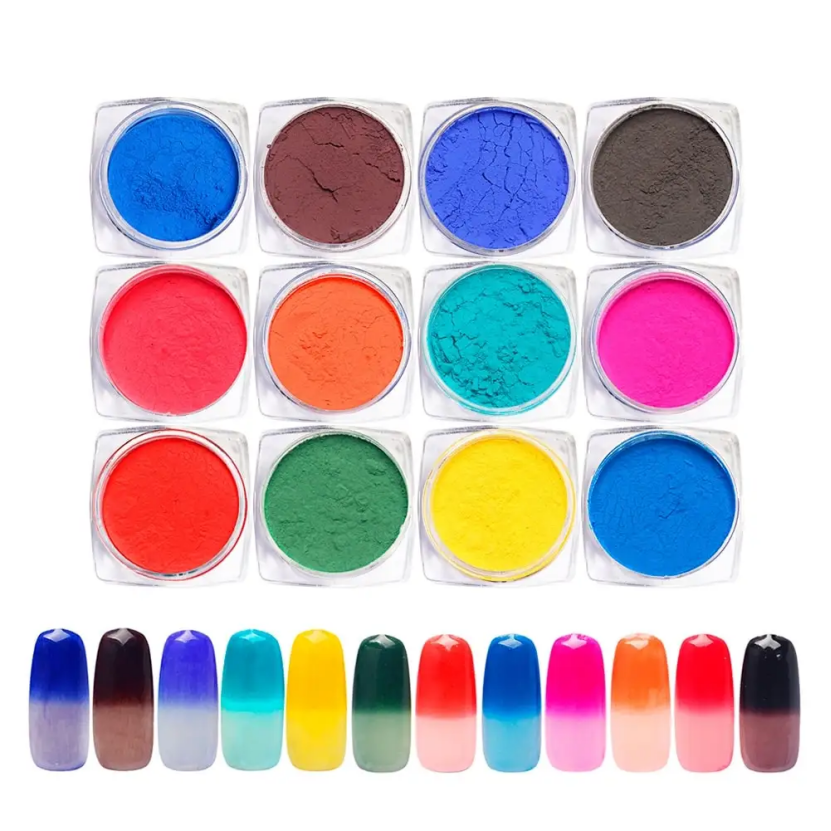Understanding Thermochromic Pigments

What Are Thermochromic Pigments?
Thermochromic pigments are unique substances that shift color when temperatures change. These materials find wide use across many fields thanks to their special knack for showing heat shifts visually. The word “thermochromic” comes from Greek roots: “thermo” for heat and “chroma” for color. Unlike regular pigments, thermochromic pigments bring lively visual changes. This makes them handy and pleasing to the eye.
They usually come as powders and blend into items like fabrics, paints, and packing materials. Their flexibility has turned them into a vital part of creative product designs in various trades.
How Do Thermochromic Pigments Work?
The way thermochromic pigments function ties back to their chemical makeup. Most rely on liquid crystal technology or leuco dye setups. In liquid crystal-based thermochromic pigments, color shifts happen as liquid crystal bits line up at certain heat levels. This lineup changes how light hits the material. That leads to noticeable color switches.
On the other hand, leuco dye-based thermochromic pigments depend on reversible chemical shifts. At set temperatures, these dyes flip between colored and clear states. Heat energy sparks molecular tweaks to make this happen.
Types of Thermochromic Pigments
Thermochromic pigments split into two main kinds:
- Reversible Thermochromic Pigments:These go back to their first color once the heat drops to its starting point. They suit tasks needing ongoing heat tracking.
- Irreversible Thermochromic Pigments:These change color for good when hitting certain temperatures. They often show up in things like fire safety markers or tamper-proof seals.
Both types can be adjusted to fit specific trade needs, boosting their use in many ways.
Applications of Thermochromic Pigments in Various Industries
Use of Thermochromic Pigments in Textiles
The fabric trade has jumped on thermochromic pigments to craft fresh, engaging clothing styles. By weaving these pigments into cloth, makers create outfits that switch colors with body heat or outside conditions. This trick shines in fashion and sports gear, blending looks with purpose.
For example, sports clothing with thermochromic pigments can signal overheating by changing hues during hard workouts. Likewise, kids’ outfits often use these pigments for fun designs that grab young eyes.
Role of Thermochromic Pigments in Paints and Coatings
Thermochromic pigments have shaken up the paints and coatings world by adding lively visual twists to surfaces. These paints get used a lot for decoration in car finishes, home insides, and gadgets.
Beyond looks, thermochromic coatings do practical jobs like heat tracking and energy saving. For instance, building materials painted with them can bounce heat in warm weather and soak it up when it’s cold. This helps with green energy solutions.
Integration into Inks and Printing Solutions
The printing trade taps thermochromic pigments for lively printed goods like labels, packing, and secure papers. These inks add a layer of use by showing hidden words or pictures at set temperatures.
In secure printing, thermochromic inks fight fakes by adding traits tough to copy without special know-how or tools. Plus, they spice up marketing efforts with heat-triggered designs on promo stuff.
Emerging Uses in Food Packaging and Medical Devices
Thermochromic pigments are picking up steam in food packing to ensure quality and safety. Packing with these pigments can show if food stayed at the right heat during shipping and storage.
In medicine, thermochromic tech fits into tools like thermometers and sterilization markers. These uses lean on the exact color-shifting traits of thermochromic pigments for spot-on readings or to confirm cleaning processes.
Hangzhou Yayang Industrial Co., Ltd., known for custom work in effect pigment making, offers tailored fixes for trades exploring new uses of thermochromic tech.
Factors Driving the Popularity of Thermochromic Pigments
Demand for Innovative and Functional Products
The growing call for goods mixing use with eye-catching style has sharply lifted thermochromic pigments’ fame. These pigments let makers craft items that do a job and grab users with shifting colors. Take the drink trade: thermochromic pigments on labels show the best sipping heat, boosting user fun.
The chance to tweak products with thermochromic pigments also opens doors for brands to stand out in crowded markets. From clothing to packing, these pigments give a fresh edge that fits the rising taste for lively, smart designs.
Growth in the Asia Pacific Market for Thermochromic Pigments
The Asia Pacific area has stepped up as a big name in the thermochromic pigments scene. Fast growth and city-building in places like China and India have sparked wider use of advanced materials across trades. Plus, the area’s strong making skills and budget-friendly processes make it a hot spot for thermochromic pigment suppliers.
Buyer tastes here are shifting toward clever, useful goods, feeding demand more. The growing middle class with extra cash leans toward new uses like heat-sensitive fabrics and packing fixes.
Advancements in Technology Enhancing Efficiency
Tech leaps have been key in making thermochromic pigments sharper and easier to get. Updates in liquid crystal and leuco dye setups have boosted their touchiness and toughness. This lets them work in tougher tasks.
For instance, recent steps have birthed thermochromic materials that hold up in harsh settings without losing steam. These gains widen their use range and lift the trustworthiness of goods using thermochromic tech.
Key Trends Shaping the Future of the Thermochromic Pigment Market
Rising Demand for Sustainable and Eco-Friendly Solutions
As green living takes center stage worldwide, trades hunt for earth-kind swaps for old materials. Thermochromic pigments aren’t left out, with makers digging into ways to craft mixes that cut environmental harm. This covers using biodegradable bases and leaning less on non-renewable stuff during making.
Buyers also push this wave by picking brands that show green care. By weaving eco-friendly thermochromic pigments into goods, firms can match these ideals while boosting their market pull.
Expansion of Smart Packaging Applications
Smart packing is one of the quickest-growing fields using thermochromic tech. By adding heat-sensitive pigments to packing styles, firms can give live updates on product quality and safety. For example, food packing with these pigments can flag if items hit unsafe heat during shipping or storage.
This new twist builds buyer trust and cuts food waste by keeping better tabs through the supply chain. Likewise, drug firms are picking up smart packing to keep medicine strong by showing storage states visually.
Development of Advanced Color-Changing Formulations
Research and building efforts keep aiming at crafting advanced mixes with better traits. This includes stretching the heat range where color shifts happen, sharpening color brightness, and boosting wear resistance.
Such steps make thermochromic pigments fit for high-end uses like car coatings or aerospace parts. Crafting multi-color setups that flip between several shades also widens creative options across trades.
Hangzhou Yayang Industrial Co., Ltd. provides tailored solutions for industries exploring innovative uses of thermochromic technology.

Frequently Asked Questions (FAQs)
What makes thermochromic pigments unique compared to standard pigments?
Thermochromic pigments switch colors with temperature changes. They offer handy perks like heat signaling and visual charm through lively effects.
Which industries benefit most from thermochromic pigment applications?
Fields like fabrics, paints and coatings, printing solutions, food packing, medical tools, and car trades use these pigments widely for their range.
Are there environmentally friendly options available within this market?
Yes, makers are crafting green mixes using biodegradable bases or cutting reliance on non-renewable stuff in production.
How does smart packaging utilize thermochromic technology?
Smart packing uses heat-sensitive pigments to show product quality or safety states during storage or shipping.
For more details on our range of effect pigment products including Pearl Pigment , Glitter Powder, Fluorescent/Luminous Pigment , Metallic Powder , Thermochromic/Photochromic pigment offerings since 1999 at YAYANG, feel free to reach out!
